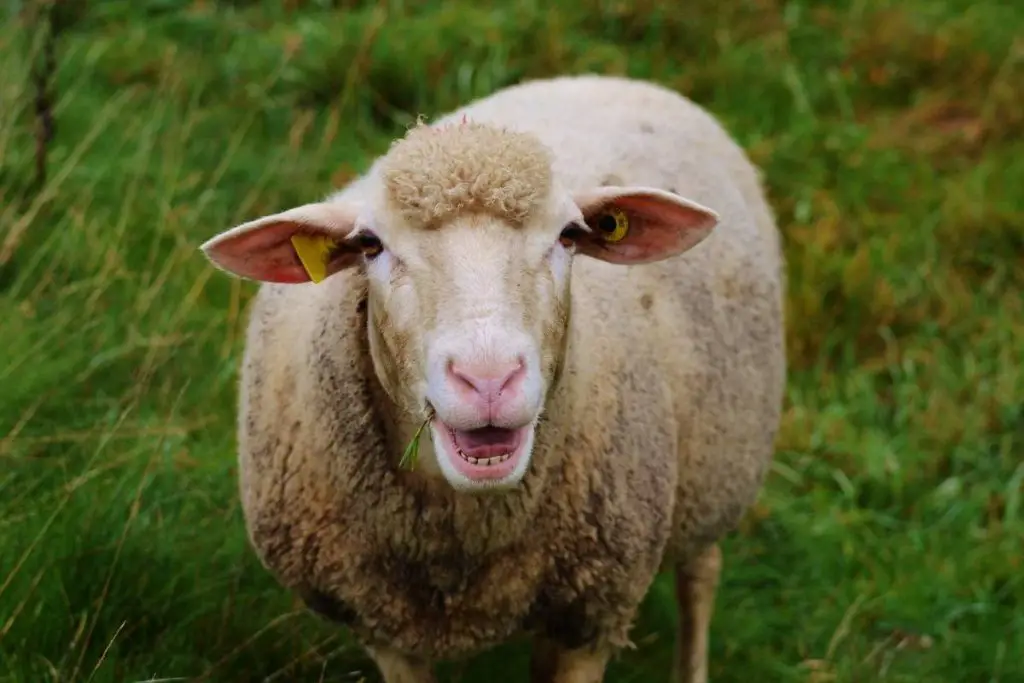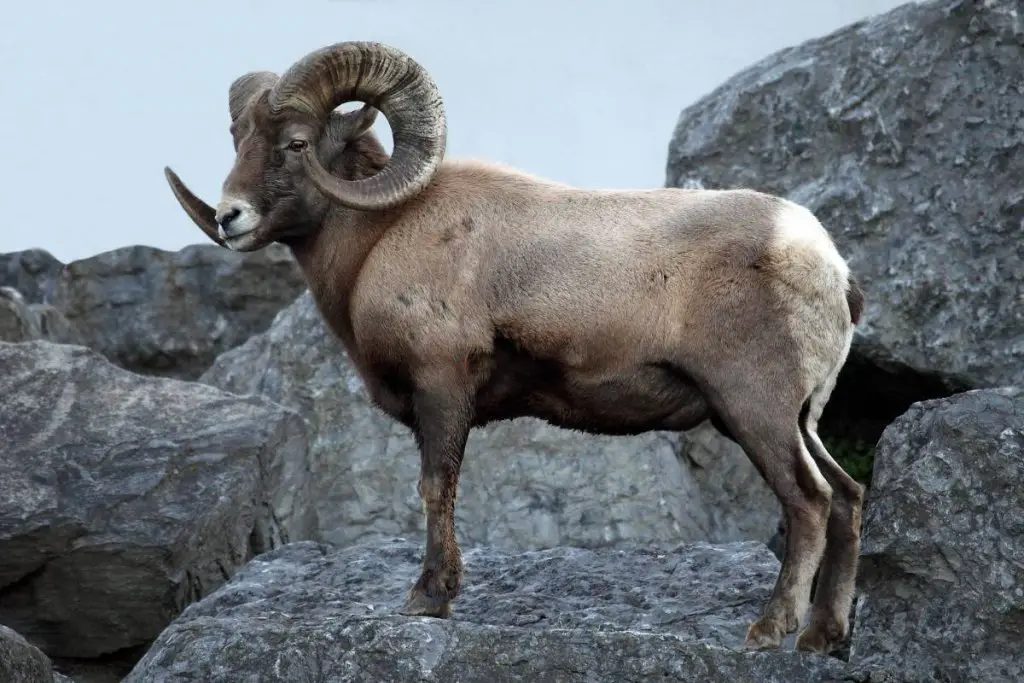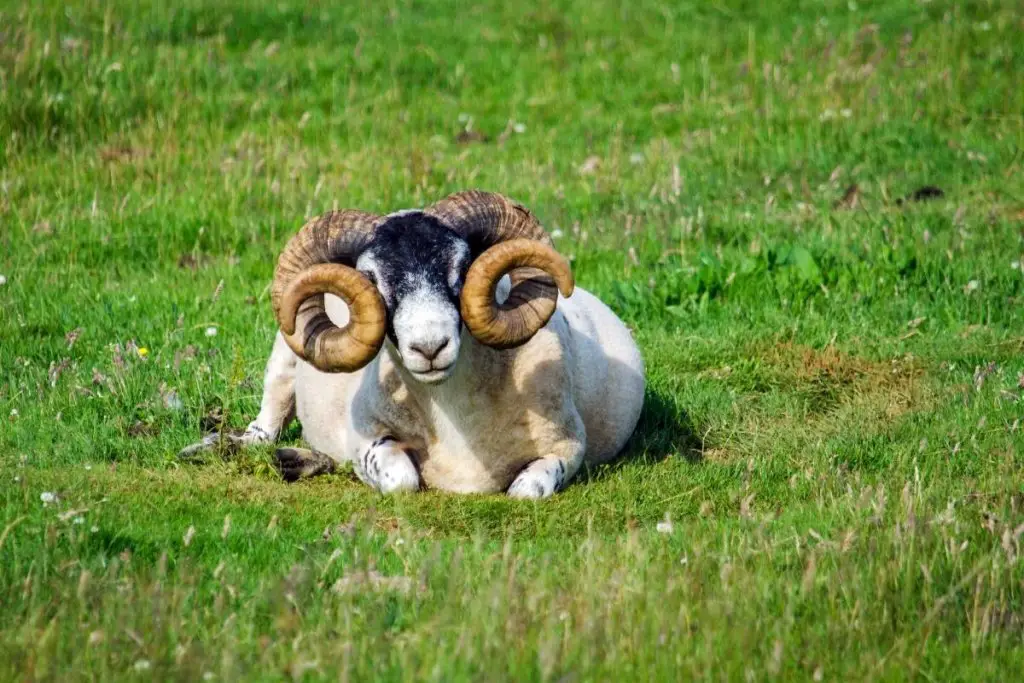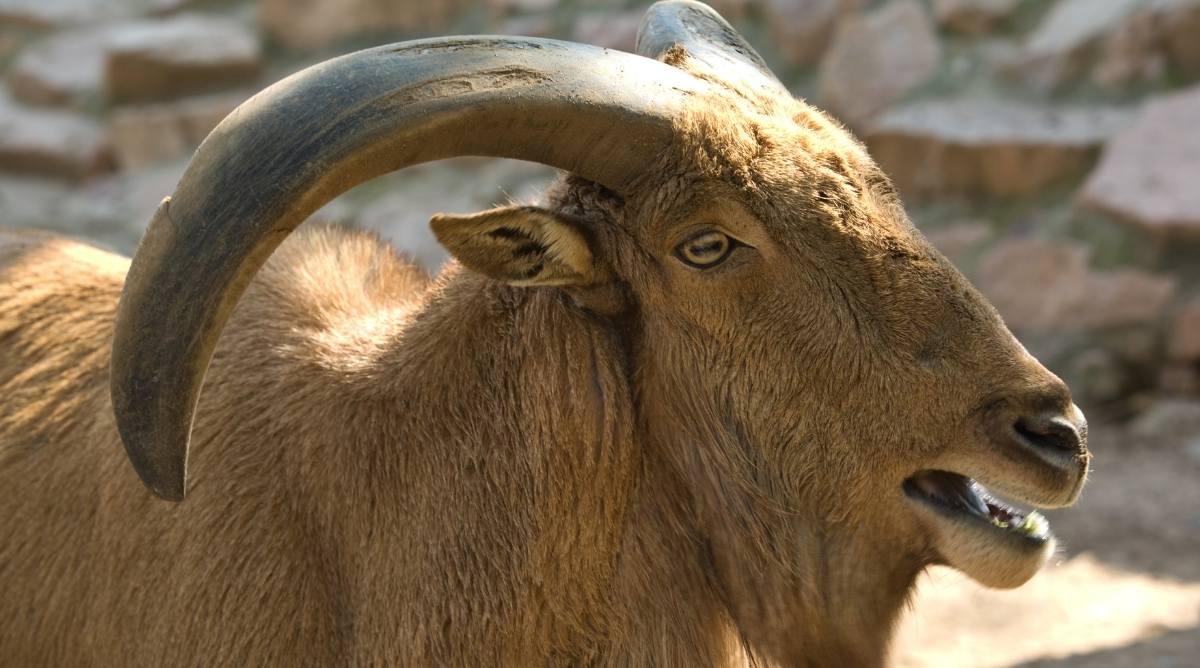Some sheep have horns and some don't. It depends on their breed, age, and gender. In some some breeds, neither rams nor ewes have horns. In others, both have horns. Lambs have horn buds, and start growing horns over the first months and years of their lives.
Table of Contents
What is the Purpose of Sheep Horns?
Sheep horns serve several purposes, including defense, competition, and feeding.
Before domestication, wild sheep breeds grew horns to aid in their survival. Here are a few uses of sheep horns in the wild:
- They’re tools of defense. Wild sheep breeds live in harsh environments where they often encounter predators. So, horns are handy defense tools against these attackers.
- They’re used in marking territories. Male sheep are territorial, especially in the wild. Therefore, they battle over turf to show dominance over their territory.
- Rams battle each other using horns to earn mating rights. Wild and domestic rams fight to determine who will mate with the ewes. These headbutting contests happen during every mating season.
- They’re feeding tools, especially for wild sheep. Unlike their domestic counterparts, wild sheep fend for themselves, and may use their horns to help grazing. According to the National Wildlife Federation, both sexes of the Bighorn sheep use their horns for feeding.
Farmers prefer sheep breeds without horns

As humans started to domesticate sheep, they selected for traits desirable for meat, milk, and wool production. Horns are not advantageous from a farmer’s perspective and in fact can make flock management more difficult.
For these reasons, horns have been eliminated over time from many breeds. At the same time, horns aren’t as important for domesticated sheep since they typically don’t have to deal as much with predators.
Commercial farmers prefer sheep breeds that don’t grow horns due to several reasons, including:
- To protect the sheep from hurting other animals and humans through headbutting.
- Horned sheep get stuck in spaces like fences, thickets, equipment, and feeders.
- It’s challenging to handle and shear horned sheep.
While there are human uses for sheep horns, they tend to be uncommon. Some people use sheep horns to make hair combs, knife handles, powder containers, and horse bits. There are also farmers who raise horned rams as trophy animals due to their impressive horns.
What Sheep have the Biggest Horns?

Here are the wild sheep breeds with the biggest horns:
- Bighorn sheep (Ovis canadensis): Native to North America and comprise three subspecies, the Rocky Mountain bighorn sheep, the Desert bighorn sheep, and the Nevada bighorn sheep. Bighorn rams have gigantic, curved horns that grow up to 3 feet long (91.44 cm) and weigh about 30 pounds (13.61 kg). The ewes have smaller horns that curve slightly at the tips.
- Dall Sheep (Ovis dalli dalli): A wild sheep species inhabiting the mountain ranges of Alaska. Dall sheep rams have massive, curved horns that grow to about 3.8 feet long. The horns have rings (annuli) along their length – that form annually and determine the sheep’s age. Ewes have shorter, slender, and slightly curving horns.
- Arapawa sheep (Ovis aries): New Zealand feral sheep originating on Arapawa Island in the Malborough Sounds. The ram horns have a characteristic spiraled shape and can grow up to 3.2 feet (97.53 cm). The ewes are polled.
The Presence of Horns in Rams vs Ewes
In some sheep breeds, both rams and ewes have horns. More commonly, rams have horns while ewes are polled. In some breeds, neither rams nor ewes have horns.
Three genes determine whether a sheep will grow horns. These include:
- The gene dominant for the polled condition (P)
- A sex-linked gene for the non-polled condition (p)
- A gene responsible for the growth of horns in both rams and ewes (p’)
Farmers can determine which of the above traits a certain ram has through breeding.
For instance, you can allow a horned ram to mate with a horned ewe. If all the offspring are horned, then the ram has a dominant gene for the horned trait. If some offspring are horned and some are not, then the ram has a recessive gene for the horned characteristic.
Sheep Breeds with Horns

Below are other examples of breeds of sheep with horns:
- Mouflon sheep (Ovis orientalis orientalis): These are feral sheep species and one of the ancestors of domestic sheep. Mouflon ewes can either be horned or polled. The rams have curled and balanced impressive horns, growing up to 2.75 feet long (83.82 cm). Mouflon sheep have become a sought-after breed among trophy hunters.
- Jacob sheep (Ovis aries): Unlike most sheep species that grow a pair of horns, Jacob sheep can have two or three horn pairs. One pair may be vertical, with the second one being curved downwards. Another striking characteristic about the Jacob sheep is their black and white coat.
- American Blackbelly (Ovis aries): Native to the United States, this breed resulted from crossbreeding the Barbados Blackbelly and the Mouflon sheep. The American Blackbelly is a small-to-medium-sized sheep variety with a striking tan coat. The ewes may be polled, horned, or have scurs. Rams usually have impressive large horns.
- Wiltshire horned sheep (Ovis aries): Wiltshire horned sheep are white with tiny black spots on their undercoats. Both sexes are horned, but the ewe horns are shorter and curve backward. The ram horns are more prominent, forming spiral loops.
- Dorset sheep (Ovis aries): Dorset sheep are the product of a crossbreed between the Merino sheep and the Horned sheep of Wales. Dorset is a medium-sized white sheep that can either be polled or horned. For the non-polled varieties, both sexes have forward-curving horns.

